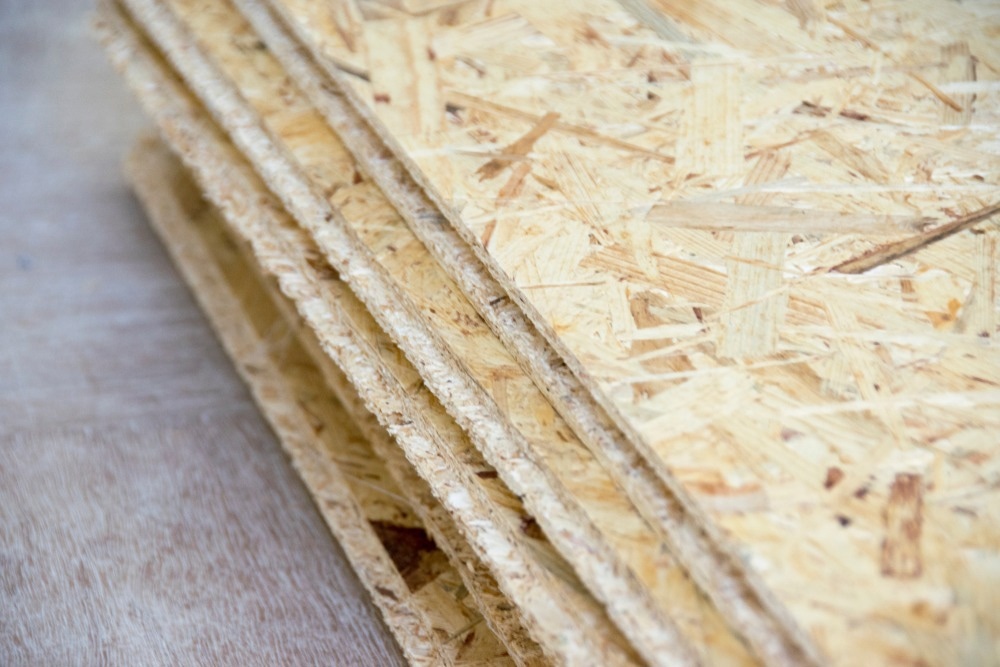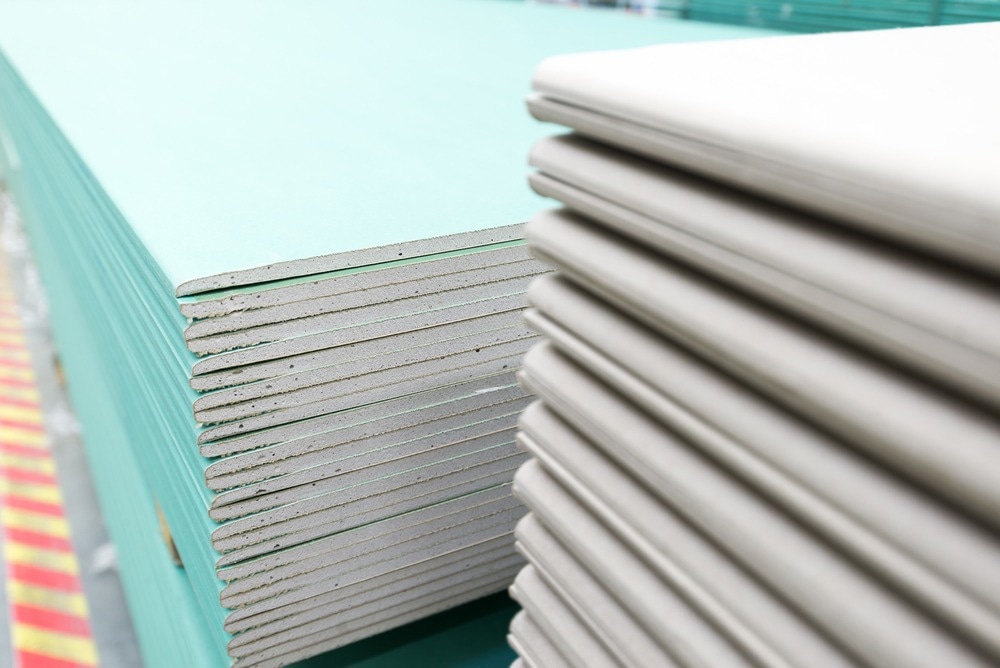A new generation of recycled, environmentally friendly building materials is now coming to the fore in response to the challenge of a growing population and increasing climate concerns, including construction boards made from waste products.

Image Credit: Libor Píška/Shutterstock.com
The construction industry as a whole is responsible for about 11% of the planet’s carbon emissions. Much of this is through embodied carbon in construction materials (the combined weight of CO2 released into the environment through raw material extraction, transportation, and manufacturing in the whole production cycle).
Because of this, efforts to replace traditional construction materials with environmentally friendly alternatives are likely to create significant sustainability-related impacts.
For example, a Scottish company, Kenoteq, creates bricks from construction waste. The company’s K-Briq product is made of 90% waste material in a low-energy unfired brick recycling technique. The result is a usable building product with about 72.5 g of embodied carbon (CO2e) compared to approximately 570 g of CO2e for traditional clay bricks.
Waste Fiber Construction Boards
Construction boards and sheet materials are used in the vast majority of building projects due to their versatility and low cost. They typically make up internal walls and partitions and are also used in roofs; in some cases, board materials also form structural and even external elements of the building.
They are often engineered for strength using relatively harmful additives, as in the case of MDF (medium density fiberboard) which contains wood fibers and lots of glue to hold them together. Drywall (or plasterboard) is a similarly heavily processed material.
Recently, product developers have been introducing sheet materials made out of recycled waste components that often perform better than their traditional counterparts.
One proposed method tackles an expensive waste disposal issue for the paper recycling sector to make construction boards from waste paper sludge. When paper recycling plants process bulk paper waste, some of the water used to pulp the material runs off as a residual waste stream.

Image Credit: BestPhotoPlus/Shutterstock.com
Paper recycling companies have to cover the cost of disposing of this paper mâché like sludge, but if they invested in facilities to convert this waste into construction boards, they would likely see a return on this investment within a few years and an extra revenue stream in perpetuity after that.
A key feature of this proposal is the fact that it closes a waste stream while opening up a manufacturing stream, creating value in both directions. This value is also simultaneously economic and environmental in both directions.
Ecological approaches like this one consider systems as a whole rather than only discrete issues in isolation. The result is often a solution with wide-ranging benefits rather than piecemeal interventions that only serve to move problems elsewhere.
Spanish Startup Taking Paper Waste Construction Boards to Market
Honext, a startup based in Barcelona, Spain, has developed a method that uses more waste from the paper recycling industry. The company makes construction boards out of residual cellulose material from cardboard and paper waste from paper production facilities.
This material has already been reused several times, so the cellulose fibers that remain in them are too short to be bound again for use in paper. Approximately seven million tons of this kind of waste is created each year.
Honext mixes the cellulose fibers with water and enzymes that strengthen the bindings between the materials’ cellulose fibers without the use of resins (which cannot be recycled).
The company is also aiming to make the production process carbon neutral. Honext’s facility near Barcelona uses gas and electricity generated from the local town’s waste using anaerobic digestion methods. Any water used in the facility is kept within a closed circuit and reused.
Sheet Product Concept Using Waste Potato Peel
Chip[s] Board is a product developed by London, UK designers Rowan Minkley and Robert Nicoll. It uses waste potato peel in an MDF alternative that can be easily disposed of at the end of its shelf life.
Currently, in the UK alone, the furniture sector generates 140,000 tonnes of waste MDF each year. This cannot be recycled. But, unlike MDF, Chip[s] Board does not contain formaldehyde or other toxic substances, and it is biodegradable.
The designers see this product as an opportunity to tackle multiple ecological problems at once: the manufacture and supply of construction materials, un-recycled MDF waste, and food waste.
Currently, around a third of all food produced is not eaten. This food also contains a significant amount of CO2e, so turning the waste stream into a resource for new materials for construction reclaims the CO2e that would otherwise be wasted.
This is another example of an ecological, systemic approach that results in solutions with multiple, diverse benefits and beneficiaries.
More from AZoBuild: Building Low-Carbon Hemp Homes
References and Further Reading
Cousins, S. (2022). 3D printing turns to recycled plastic to extend its sustainable credentials. [Online] RIBA. Available at: https://www.ribaj.com/products/recycled-waste-plastic-used-to-make-3d-printed-homes-sustainability
Hitti, N. (2020). Honext develops recyclable construction material made of cellulose fibres from waste paper. [Online] Dezeen. Available at: https://www.dezeen.com/2020/11/26/honext-recyclable-construction-material-cellulose-paper/
---. (2018) Rowan Minkley and Robert Nicoll recycle potato peelings into MDF substitute. [Online] Dezeen. Available at: https://www.dezeen.com/2018/12/12/rowan-minkley-robert-nicoll-recycle-potato-peelings-mdf-substitute/
Pilkington, B. (2021). Reducing the Construction Industry's Footprint with Revolutionary Bricks. [Online] AZO Cleantech. Available at: https://www.azocleantech.com/article.aspx?ArticleID=1251
Rowland, Miles (2019). Green Report: Construction Must Slash Embodied Carbon.” Construction News. [Online] Construction News. Available at: https://www.constructionnews.co.uk/sustainability/green-report-construction-must-slash-embodied-carbon-23-09-2019/
Zebitz, B. (2018). High Quality Building Boards from Recycled Paper Waste. [Online] Challenges.dk.
Disclaimer: The views expressed here are those of the author expressed in their private capacity and do not necessarily represent the views of AZoM.com Limited T/A AZoNetwork the owner and operator of this website. This disclaimer forms part of the Terms and conditions of use of this website.